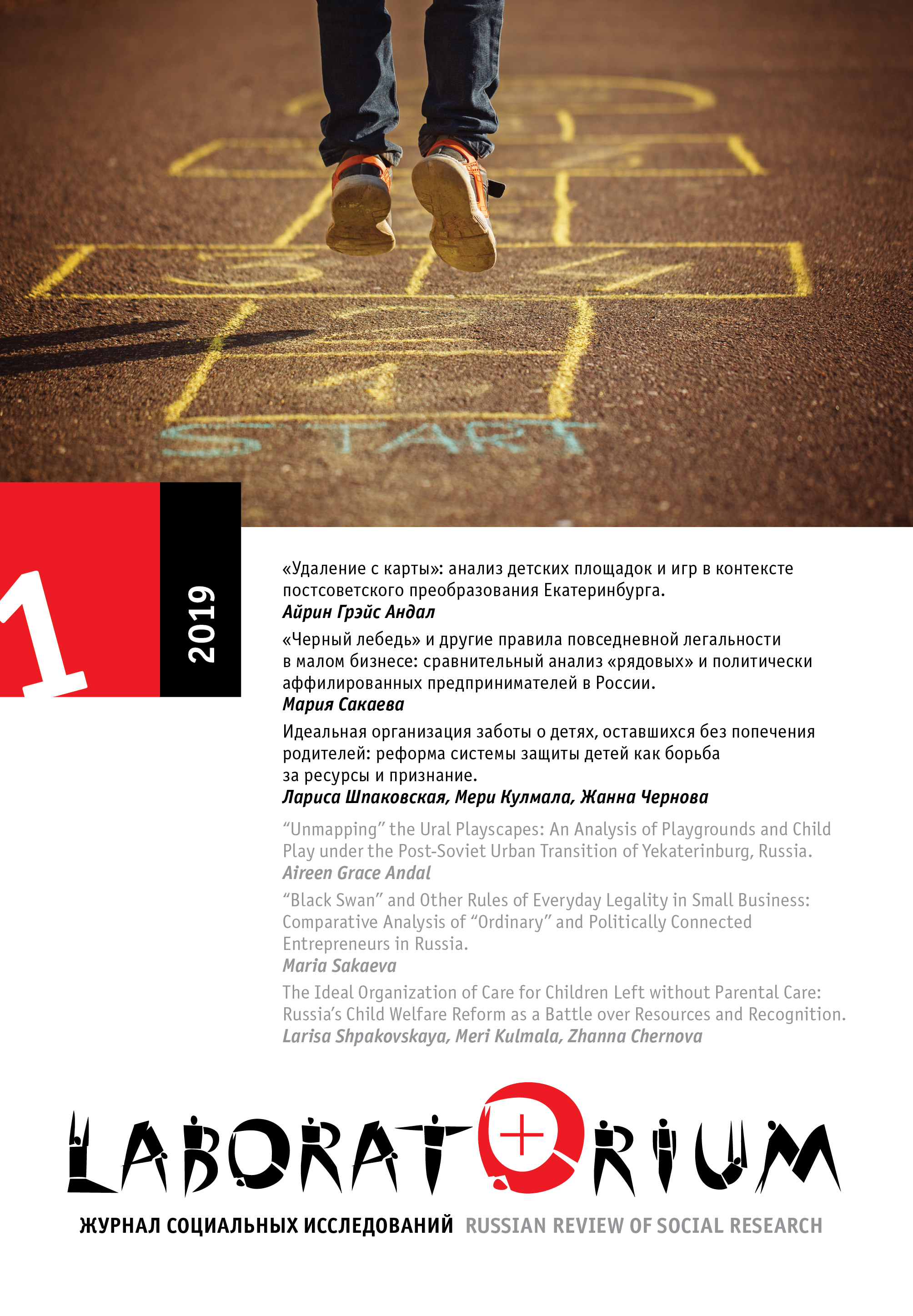“Unmapping” the Ural Playscapes: An Analysis of Playgrounds and Child Play under the Post-Soviet Urban Transition of Yekaterinburg, Russia
Main Article Content
Abstract
This study examines playgrounds as lenses on urban transitions to explain the link between urban transformations and changes in the discourse of play and childhood. Specifically, it compares Soviet public playgrounds and post-Soviet privatized playscapes in the city of Yekaterinburg, Russia, through primary observation and secondary data analysis. Using the framework of social reproduction developed by Cindy Katz and Saskia Sassen to explain how the local forces affect cities, my analysis shows that the shift in the discourse of play and childhood in the post-Soviet period is hinged on global influences combined with local transformations, from the abandonment of Soviet ideals of communal play spaces to the embracement of today’s consumerist play places. Whereas the old Soviet playgrounds have uncertain purposes, in contemporary Yekaterinburg private playgrounds offer a narrative of play in terms of leisure, love, and convenience for parents. Children turn into consumers of private play, leaving most of the Soviet playgrounds as idle spaces in the city. This article argues that Yekaterinburg’s shift toward participating in the globalized economy combined with its transition from the Soviet ideals maintains social relations and reproduces social inequalities in childhood, as this condition favors consumerist narratives of play. I conclude that the playgrounds in Yekaterinburg are bystanders of new global ecologies whereby social, political, and economic transformations become an impetus to reproduce new ways of seeing the social importance and meaning of play and playgrounds.
Article in English
DOI: 10.25285/2078-1938-2019-11-1-5-30
Keywords
Play, Playground, Children, Social Reproduction, Urban Transition
Abstract 221 | PDF Downloads 320

